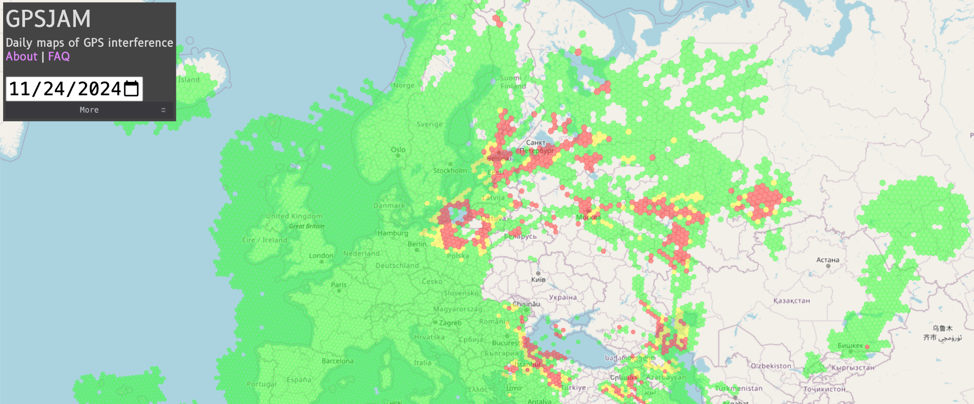On This Page:
GIS analysts play an exciting and impactful role, attracting individuals passionate about understanding and interpreting data to describe our world. By combining technology, geography, and data science, these professionals uncover complex patterns and processes that drive informed decision-making, benefitting both people and the planet.
This guide examines the process of becoming a GIS analyst. It explores what GIS analysts do, the key skills required, steps to entering the field, job outlook, and potential salaries—helping you discover if a GIS analyst career is right for you.
What Is a GIS Analyst?
A GIS analyst, or Geographic Information System analyst, works at the intersection of programming, cartography, and data analysis to manage and analyze geospatial data—information that describes objects and events on or near the Earth’s surface.
GIS analysts typically use specialized mapping software to design and create data maps, which can be integrated with other datasets to enhance intelligence for complex purposes. These maps are crucial for decision-making in applications like land development and infrastructure projects, as they provide actionable, project-based insights into an area of interest.
GIS analysts are also responsible for identifying and assessing patterns and trends in spatial data, developing unique mapping tools, and maintaining libraries of geospatial information cataloged in various data formats.
What Do GIS Analysts Do?
While the tasks of a GIS analyst can vary, their primary responsibilities involve managing and utilizing GIS resources, like ArcGIS and satellite imagery, to collect, analyze, and present spatial data in the form of maps and graphic reports.
Although there are numerous industries and applications that GIS analysts serve, some of the most common are agricultural production, natural resource conservation, infrastructure development, marketing, national defense, and global telecommunications.
Below is a good example of how GIS data is used to map global GPS interference in commercial and military airspace.

Source: Gpsjam.org
Some of the day-to-day responsibilities of a GIS analyst include:
- Data Management
- Collect and handle geospatial data from various technologies
- Ensure data accuracy and adherence to company standards
- Maintain data integrity through best industry practices
- Mapping and Analysis
- Design and edit GIS data for multiple projects
- Use tools like ArcGIS Desktop, ArcGIS Pro, and ArcGIS Online for data visualization
- Integrate topographical data with external datasets to create digital maps
- Identify patterns and trends in spatial data
- Reporting and Technical Tasks
- Generate geographic data reports using data visualizations
- Perform data cleaning and munging to ensure proper data formatting
- Develop mapping applications and tools for efficient data use
- Collaboration and Support
- Deliver training and technical support to end users
- Collaborate with cross-functional teams and lead efforts on GIS projects
- Serve as a subject matter expert in GIS and spatial data analysis
Necessary Skills for GIS Analysts
As with most careers, specific skills can help drive momentum for GIS prospects and bring tangible value to the businesses they serve. While the following list is anything but exhaustive, it acts as a strong foundation and jump-off point for those hoping to curate an advantage in GIS-focused fields.
Data Collection, Evaluation, and Analysis
Since GIS analysts work primarily with spatial data, they must understand how to collect, evaluate, and maintain it according to industry standards. Developing an analytical mindset to identify trends and patterns within raw data, and effectively communicate these findings, is a core requirement for the role.
GIS Software Mastery
ArcGIS and QGIS are two of the most widely used GIS software platforms for creating, analyzing, and managing spatial data. While dozens of GIS tools exist, mastering two or three is an effective strategy for students and aspiring GIS analysts.
Programming and Database Management
GIS analysts use numerous programming and database management tools. The following are consistently recommended in GIS-related fields.
- Python: for automation and analysis
- PostGIS: for data management
- SQL: for querying spatial databases
- JavaScript: for web map development
Visualization and Communication
GIS analysts must communicate insights from raw data to both technical and nontechnical audiences, making written and visual communication skills essential. It’s important to adapt communication styles for different audiences, translating industry jargon into understandable language for any listener.
Tip: If public speaking makes you uncomfortable, try to address this in school. Most colleges and universities offer public speaking classes to help you build confidence and stand out from your peers.
Project Management
GIS students should familiarize themselves with key project management skills before entering the professional workplace.
Agile: Agile project management is more of a philosophy or framework than a strict methodology. It employs an iterative and flexible approach to managing and completing projects. Agile management skills enable GIS analysts to break large projects into small milestones, using methods like Scrum, Kanban, and Extreme Programming to navigate project execution.
Scrum: Scrum is a very popular Agile methodology used by new and senior GIS analysts. It organizes workflows into short milestones called “sprints,” typically lasting two to four weeks, to deliver incremental value to client projects. Scrum involves a cross-functional team, with tasks delegated to each team member, ensuring dynamic milestones and timely project completion.
5 Key Steps to Becoming a GIS Analyst
While paths to becoming a GIS analyst vary, the following steps provide a solid baseline for pursing this career.
-
Build Your Educational Foundation
The best way to become a GIS analyst from ground zero is to pursue a bachelor’s degree (or higher) in fields like GIS systems, geography, environmental science, or urban planning and land development. These degrees all use GIS tools and prepare students for the analytical, problem-solving approach needed for most GIS analyst positions. Choosing a broad degree like GIS systems will help you explore the various fields that apply GIS to processes and workflows, making it a good option for those not set on a specific field.
-
Master a Few Technical Skills Involving GIS
Learning two or three of the most common GIS tools (like ArcGIS and Python) is the best way to get a leg up over other entry-level candidates. While GIS-specific degree programs typically cover this software, taking the initiative to master these tools independently demonstrates commitment and expertise to potential employers.
-
Build Your Resume
As with any career, take every opportunity to build your resume and professional network before entering the job market. By working with professors on ongoing academic research, completing internships over the summer, or participating in university clubs and programs, you show future employers that you have proactively positioned yourself for success—a huge “green flag” for GIS analyst roles.
-
Obtain GIS Certifications Outside of School
Earning GIS certifications, especially those obtained outside your standard coursework, is one of the best strategies to demonstrate your proactive attitude and willingness to learn. Esri Technical Certifications are widely recognized in the GIS field, offering specialties in areas like ArcGIS, JavaScript, and geodatabase management.
-
Maintain Your Skills Through Continuing Education
As data-based applications evolve rapidly, professionals in the field should continuously grow their network and expand their education. Continuing education may involve attending conferences on industry tools and trends, conducting new research to enhance processes, or obtaining specialty certifications required for higher positions.
Remember: Just because you are comfortable now doesn’t mean you should stand idle. Those actively pursuing success often advance further than those who remain static.
Job Outlook for GIS Analysts
The GIS market is projected to grow at approximately 9% CAGR over the next four years, with nearly 56,000 new US-based jobs expected. This growth is largely driven by increasing reliance on data for applications involving environmental science (climate and natural resources), AI/ML technologies, and cloud computing.
As private businesses, governments, and militaries continue to explore new GIS-based applications—such as commercialized space exploration or domain-focused climate research—evolving roles and opportunities for stakeholders and decision-makers are expected to emerge.
GIS Analyst Salary: How Much Do They Make?
GIS analyst salaries vary widely based on factors like experience, industry, and project complexity—all of which can drastically impact how much someone earns.
Generally, private sector positions offer higher compensation than government roles, while specialized fields like space exploration may provide greater earning potential than natural resource conservation for a specific state or region.
According to Zippia, the average salary for a GIS analyst in 2024 is $63,718 (excluding PTO or holidays). It’s important to note that each position comes with different benefits and job requirements. Some positions will be fully in-person, some remote, and some hybrid, which may or may not include fieldwork.

